What Milestones Should a 1 Month Old Infant Have?
Cognitive Development Milestones
1. Shows Sucking Reflex
The sucking reflex is said to be fully developed when your baby is able to close their lips around a finger or nipple placed in their mouth and squeeze it between their tongue and palate. Your baby starts developing this reflex as early as 32 weeks of pregnancy and is fully developed by 36 weeks of pregnancy. Preterm babies may have a bit of difficulty developing this reflex but they generally master it by their actual due date.
Completion Rate on BabyG App: 94% Babies
Here is a video to help you understand this reflex better.
Importance: The sucking reflex, along with the rooting reflex, is what helps babies feed, be it from a bottle or breast. It takes place in two steps. First, your baby will place the nipple between their tongue and the palate. Second, they will move their tongues to get milk. This step is also called expression; it helps stimulate the breasts for a letdown. The sucking reflex can also be beneficial for soothing a baby.
What If my baby does not complete this milestone?
This milestone is essential for feeding, and a lack of it may point toward neurological disorders. A weak suction is okay since babies take time to fully grasp sucking, swallowing, and breathing together.
2. Shows Palmar Reflex
Your newborn will also display the Palmar Grasp Reflex. This means that if you place something in your baby's open palm, they will close their palm around it. This signals your baby’s development toward learning to grasp things voluntarily. It appears as early as 16 weeks of pregnancy and is fully developed by 32 weeks. Having your baby's little hand close around your finger can be the most amazing sensation ever.
Completion Rate on BabyG App: 89% Babies
Take a look at this video to understand palmar grasp in newborns.
Importance: This is an involuntary action that becomes the basis for voluntary actions in later stages of life. Your baby will be able to clutch and cling to a variety of objects if they master the palmar reflex. After four to six months, the palmer grasp reflex slowly disappears and is replaced by voluntary actions.
What if my baby does not complete this milestone?
Talk to your pediatrician if your baby doesn't show signs of palmar grasp. Delays in this reflex may prevent them from grasping objects properly as they grow older. Head to the BabyG app for activities that will help your baby achieve all milestones on time and get instant chat support as well.
3. Shows Rooting Reflex
When you position your finger or nipple near their mouth, they will turn their mouth towards it. This typical milestone is known as the Rooting Reflex. You can test it by stroking the cheek of your baby and seeing if they turn toward it. The sucking reflex and rooting reflex must go hand in hand for feeding. It is fully developed by birth and lasts up to four to six months.
Completion Rate on BabyG App: 94% Babies
This video demonstrates the rooting reflex to help you understand it better.
What if my baby does not complete this milestone?
The rooting reflex is very important for nutrition, and you should raise your concerns with their pediatrician to understand the absence of it. It can also be a cause for concern if your baby shows this reflex even after four to six months of age.
4. Shows Moro Reflex
If your baby feels startled or is placed from the lap onto a soft surface, they will immediately flare their arms and legs. This is a nervous system response called the Moro Reflex. It is fully developed by 30 weeks of pregnancy, starts to disappear by 3 months, and is completely gone around 12 months.
Completion Rate on BabyG App: 91% Babies
Here is a video that demonstrates the moro reflex.
Importance: The Moro reflex plays an important role in the proper functioning of the nervous system. Without this reflex in your baby's developmental stages, it might signal neurological damage, muscular weakness, or congenital malformation.
What if my baby does not complete this milestone?
If you don't see signs of moro reflex, you should raise the concern with your pediatrician. This is a vital reflex that allows healthcare professionals to diagnose any abnormalities in your baby early on.
5. Shows Plantar Reflex
This is an extension of the palmar reflex. When you slide a finger down the baby's foot from the toe to the heel, your baby will extend their toe. When doing a heel-to-toe slide, your baby will curl their toes. This is known as the Plantar Reflex. It serves the purpose of protecting the sole of the foot and is hence activated when you stimulate the area.
Completion Rate on BabyG App: 88% Babies
Importance: A normal plantar reflex shows the absence of any metabolic dysfunction or improper functioning of the neuromuscular system. The plantar reflex is very important for the baby's motor skills.
What if my baby does not complete this milestone?
The plantar reflex shows that your baby’s spinal cord and nervous system are working fine. The absence of it should be reported to your pediatrician immediately.
Physical Development Milestones
1. Makes Eye Contact
Eye contact with your baby is a major milestone that demonstrates a bond and emotional connection. Consistent eye contact can enhance brain development and social skills.
Completion Rate on BabyG App: 83% Babies
Importance: You instill a sense of security in your baby when you make eye contact with them. It is also a step toward your baby learning to communicate with you. They slowly learn to give you cues with eye contact.
What if my baby does not complete this milestone?
If not always, your baby should at least make eye contact once in a while. Absence of this eyesight milestone can point toward vision impairment by birth or due to birth injury. Remember, this milestone is achieved over time, so if your baby doesn’t make eye contact, be patient, and they’ll get there.
2. Perceives Light
Your baby will be very excited by light and brightly colored objects. Since they have blurry vision, which won't be fully developed until a few months later, it’s easier for them to perceive light and dark and even contrasting patterns.
Completion Rate on BabyG App: 84% Babies
Importance: Perceiving light and staring at it helps them develop their central vision and exercise their pupils to allow more light.
What if my baby does not complete this milestone?
If your baby isn’t responding to any kind of visual stimuli, including bright lights, contrasting patterns, or flashing lights, it’s time to consult your pediatrician. Early detection of abnormal eye movement can help you identify any vision troubles.
Speech & Communicative Development Milestones
1. Whimpers or Cries
When your baby whimpers, cries, or makes any other sound, they are trying to communicate with you. It is necessary for them to make these sounds as they are slowly learning to exercise the muscles that they'll be using later on.
Completion Rate on BabyG App: 97% Babies
What if my baby does not complete this milestone?
Almost all babies complete this milestone since crying and making whimpering noises are the only way for them to get your attention. If your baby doesn’t cry as much as others do but is healthy, happy, and content, then you’ve got nothing to worry about.
2. Cries with Intention
You might have noticed a pattern with each bout of crying. Since your baby isn’t able to talk to you yet, they’ll cry to let you know about their needs. Slowly, you’ll get to understand what each cry means, whether it’s time for a diaper change or feeding.
Completion Rate on BabyG App: 97% Babies
What if my baby does not complete this milestone?
Crying is an important activity for newborns, as it is their only form of communication. If you feel that your baby isn't crying, chances are you’ve got a baby with a calm temperament. So unless and until all their needs are met and they aren’t crying, you don't have anything to worry about.
3. Responds to a Human Voice
Newborns are more likely to respond to human voices than any others. They’ll recognize their parents' voices and feel calm, safe, and reassured. Newborns prefer high-pitched voices, which means your baby will definitely pay attention to your baby talk. They turn toward you while you talk to them or toward the object that makes the sounds.
Completion Rate on BabyG App: 79% Babies
Importance: Responding to human voices establishes development in their hearing ability as well as social skills.
What if my baby does not complete this milestone?
If your baby does not respond to your voice, you should check if they respond to any other startling sounds. A lack of response shows that your child may be hard of hearing. In such cases, you should schedule a hearing test with your pediatrician. If your baby responds to other voices but does not respond to yours, it may be because your baby is tired and overstimulated.
What Activities Can Help My 1 Month Baby Complete Growth Milestones?
Given that 85% of a baby's brain development happens in the first 3 years, activities are proven to be great for stimulating their development during these years. The BabyG app is most loved by parents for the playtime activities that help babies timely achieve these milestones and help parents sleep peacefully knowing their baby is doing well. You can use a milestone and activities tracker to track your baby’s development. Here are some of the activities to help you stimulate your baby in month 1.
1. Eye Focus
It’s normal for babies to not make eye contact very often. However, you can stimulate them to build eye contact with the “Eye Focus” activity. Get a brightly colored rattle and hold it at least 30 cm away from your baby's face. Gently shake the toy to catch their attention. Once they are looking at the rattle, gaze into their eyes, and you’ll complete the activity with flying colors.
2. Palmar Grasp
Check if your baby has the reflex with this activity. Place your finger in your baby’s palm and see if they grasp onto it tightly. Usually, this grip is really strong, and chances are they wouldn't let go for a few minutes.
3. Plantar Reflex
This is an easy activity to confirm the presence of a plantar reflex. If your baby curls up and down on their toes when the soles of their feet are lightly touched, then they have completed this milestone.
You can find more playtime activities for 1 month baby (0-3 years program) on the BabyG app. You can understand each activity through the videos, along with its frequency, benefits, and material requirements to carry it out with your tiny one.
What Should Be My Baby’s Weight, Height and Head Circumference at 1 Month?
Each baby has their own weight and height curve, and has to be read as per their birth weight and height measurements. Below are the average vitals, but you can chat with the BabyG team inside the app to understand your baby’s curve in more detail
- Average weight for 1 month boys: 3.3 kg
- Average weight for 1 month girls: 3.2 kg
- Average height for boys: 49.9 cm
- Average height for girls: 49.1 cm
- Average head circumference for boys: 37.1 cm
- Average head circumference for girls: 36.4 cm
Feeding Schedule For 1 Month Baby
Your baby is unique and so are their needs. Always keep an eye on cues that might tell you when your baby is eager to feed. They may be in the form of
- Opening and closing their mouths
- Puckering or licking their lips
- Moving towards your chest.
However, to give you definitive guidance, here is the 1 month old daily feeding schedule.
- Breastfed Babies: 8 -12 feedings per day, 10 -12 minutes each.
- Formula-fed Babies: 8 -12 feedings per day, 2 - 3 ounces(59 - 88 ml) of formula, 10 -12 minutes each.
Monitor your child's weight gain and the number of wet diapers they run through in the span of a day. A range of 5 to 6 wet diapers is a good sign that your child is adequately nourished. A healthy weight gain often indicates that they are getting enough to eat.
Sleep Schedule For 1 Month Baby
Newborns require at least 16 hours of sleep. Which is a lot, with each sleep cycle lasting between 1-2 hours. Although their sleep patterns are short and erratic, ensure that they get 8 hours of sleep during the day and night.
When To Worry About 1 Month Baby's Progress
Your baby may complete some of these milestones, if not all. However, you should talk to your pediatrician if you see some of these signs
- Poor feeding. Does not latch properly or even sucks slowly.
- Unresponsive to bright light
- Doesn't get startled or seems indifferent to loud sounds.
- Has difficulty focusing on an object or doesn't follow with gaze
- Shows little to no movement with the arms and is very stiff.
- Floppy limbs that seem excessively loose
How To Support My 1 Month Baby’s Development
It is amazing how a baby’s brain development takes place. In the first year, a baby’s brain doubles in size, and by the third year, 85% of brain development is complete. So it is very important to focus on your baby's development right from birth to unlock their lifelong learning potential.
During the initial month, when your baby is sleeping and feeding most of the time, the little time that your baby is awake should be utilized for activities like tummy time, leg and hand exercise, checking reflexes, etc.Since babies can’t tell you their problems, logging their sleep, feeds, poop, and pee patterns can help you understand the changes your baby might be going through.
Use the milestone checklist to ensure there are no red flags in your baby’s development. All the first month milestones are crucial as they are connected mainly to reflexes. Most importantly, grow your own understanding of how your baby’s body and mind are developing in the first month. All of this is provided in the BabyG app in a super easy way for every parent to give their baby the best start.



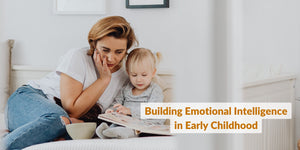


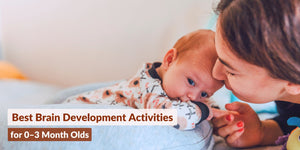

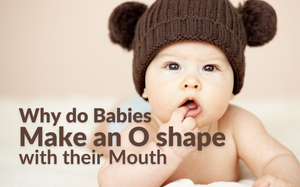
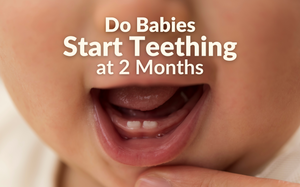
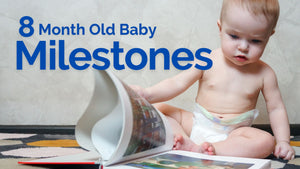
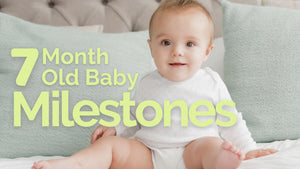

LEAVE A COMMENT